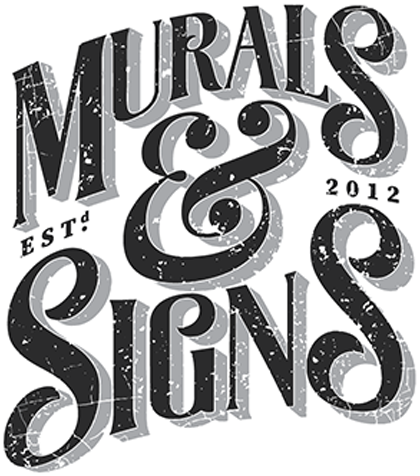In the dynamic world of commercial sign painting, artistic vision meets practical execution. Amid the creative process, it’s crucial not to overlook the paramount importance of safety. This comprehensive guide delves into the significance of safety gear and precautions for commercial sign painters, ensuring that their artistic endeavors are accompanied by a commitment to personal well-being.
Prioritizing Safety: The Foundation of Successful Painting
Safety should never be an afterthought in any creative venture, especially sign painting. Understanding the potential risks and investing in appropriate safety gear and precautions is paramount to a successful and secure painting experience.
Identifying Potential Hazards
Before embarking on any project, it’s essential to identify potential hazards associated with sign painting. These can include exposure to hazardous chemicals, elevated heights, moving equipment, and poor ventilation. By recognizing these risks, painters can implement the necessary precautions to mitigate them.
Importance of Safety Training
Safety training is an invaluable investment for commercial sign painters. Proper training equips painters with the knowledge to identify and handle potential hazards effectively. From handling chemicals to working at heights, safety training ensures that painters are well-prepared to navigate their work environment securely.
Essential Safety Gear for Commercial Sign Painters
Equipping oneself with the right safety gear is non-negotiable in the world of commercial sign painting. These protective tools act as a shield against potential risks and ensure a secure working environment.
Respirators and Ventilation Systems
Working with paints, solvents, and other chemicals can release harmful fumes into the air. Respirators and proper ventilation systems are essential to protect painters from inhaling toxic particles. N95 masks or respirators with appropriate filters help prevent respiratory issues and long-term health complications.
Eye Protection: Goggles and Face Shields
Eye protection is paramount when working with paints, chemicals, and equipment. Goggles or face shields shield the eyes from potential splashes, fumes, and debris. Clear vision is essential for precise work, and protecting the eyes ensures painters can work comfortably and safely.
Hearing Protection: Earplugs or Earmuffs
Sign painting projects can involve loud environments due to machinery, power tools, and equipment. Earplugs or earmuffs provide hearing protection, reducing the risk of hearing damage and ensuring comfort during extended painting sessions.
Hand and Skin Protection: Gloves and Barrier Creams
Direct contact with paints, solvents, and chemicals can lead to skin irritation or allergies. Protective gloves act as a barrier, preventing skin exposure. Additionally, barrier creams provide an added layer of protection and make cleaning up easier after painting.
Fall Protection: Safety Harnesses and Lanyards
When working at heights, such as when painting elevated signs, fall protection is paramount. Safety harnesses and lanyards secure painters and prevent potential falls. Proper training and the correct use of fall protection gear ensure painters can work confidently and safely at elevated positions.
Best Practices for Sign Painter Safety
While safety gear is a vital component, adhering to best practices further enhances the security of commercial sign painters.
Proper Workspace Organization
A well-organized workspace reduces the risk of accidents. Keep walkways clear of equipment, tools, and debris to prevent tripping hazards. Proper storage of tools and materials minimizes clutter and promotes a safe environment.
Ladder Safety
When using ladders for elevated work, ensure they are in good condition, stable, and placed on a level surface. Always maintain three points of contact while climbing and avoid overreaching. A ladder stabilizer can further enhance ladder stability.
Safe Handling of Chemicals
Follow manufacturer guidelines when handling paints, solvents, and chemicals. Use these substances in well-ventilated areas and avoid inhalation. Properly label and store chemicals in their designated containers to prevent accidental exposure.
Personal Hygiene and Cleanup
Personal hygiene plays a role in safety. After painting, thoroughly clean hands and exposed skin to remove any traces of paint or chemicals. Additionally, store used brushes and equipment properly to prevent accidental spills or contamination.
Emergency Preparedness and Response
Preparation for potential emergencies is a vital aspect of sign painter safety. Being equipped to respond to unexpected situations ensures a prompt and effective resolution.
First Aid Kit Accessibility
A well-stocked first aid kit should be easily accessible in the painting area. It should include basic supplies like bandages, antiseptic wipes, adhesive tape, and gloves to address minor injuries.
Emergency Contacts and Procedures
Having a list of emergency contacts, including local medical facilities and emergency services, is essential. Establish clear procedures for responding to accidents or injuries and ensure that all painters are aware of these protocols.
Fire Safety Measures
Painting materials can be flammable, making fire safety a priority. Ensure the presence of fire extinguishers in the workspace and educate painters on their use. Familiarize yourself with fire exits and evacuation routes.
Conclusion: Elevating Artistry with Safety
Safety gear and precautions are not just an accessory; they’re the guardians of artistic potential. Commercial sign painters can create breathtaking works while prioritizing their well-being. By recognizing hazards, investing in proper safety gear, adhering to best practices, and being prepared for emergencies, painters ensure that their artistic journey remains vibrant, secure, and, above all, a testament to the harmonious coexistence of art and safety.
Top-rated tools and equipment recommended by sign painting experts
